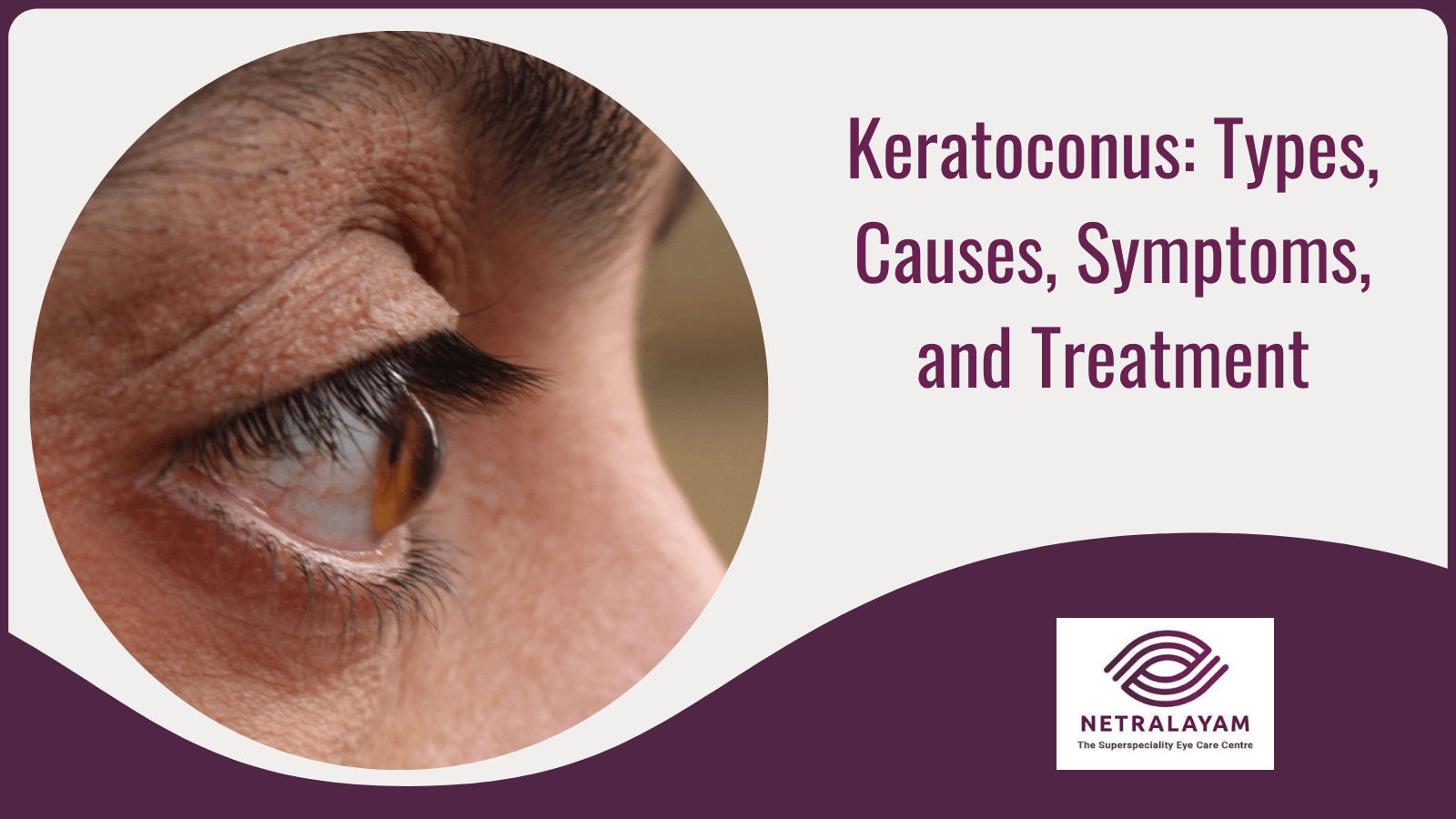Committed to Eye Care with Compassion, Technology and Competency
Committed to Eye Care with Compassion, Technology and Competency

2/26/2023
Have you ever heard of Keratoconus? This rare eye disease might not be on your radar, but it affects millions of people worldwide. In India, it is estimated that 2.3% of the population suffers from keratoconus.
This condition causes the cornea to become progressively thinner and bulge outward, leading to distorted vision and other eye-related issues. If you or a loved one has been diagnosed with keratoconus, it's essential to understand the different types, causes, symptoms, and available treatments. In this blog post, we'll dive into the world of keratoconus and explore what you need to know about this eye condition. So let's get started!
Keratoconus is a progressive eye condition that causes your cornea to become thin and bulge into a cone-like shape. This can result in blurry or distorted vision, increased sensitivity to light, and frequent changes in your eyeglass or contact lens prescriptions. It typically affects both of your eyes and often begins during adolescence or early adulthood. In severe cases, you may need a corneal transplant to restore your vision.
Here are nine different types of keratoconus that have been identified:
The exact cause of keratoconus is unknown, but it is believed to be influenced by genetic and environmental factors. Some studies suggest that the condition may be caused by an imbalance of enzymes within your cornea, which leads to the weakening and thinning of the tissue. Other factors that may contribute to the development of keratoconus include chronic eye rubbing, allergies, and connective tissue disorders. Additionally, some research has suggested that oxidative stress, hormonal imbalances, and certain medications may also play a role in the development of keratoconus.
There are several symptoms of Keratoconus, including the following:
However, some of these symptoms may be associated with other disorders, so it’s best to always consult your ophthalmologist and get yourself tested before reaching any conclusion.
Some of the most widely accepted keratoconus treatment options are:
It is important to note that the appropriate keratoconus treatment will depend on the severity of the condition and the specific needs of the individual patient. Only an ophthalmologist or optometrist who specializes in the management of keratoconus can provide you with the right guidance on the most appropriate treatment option.
See Also: What Is the Cornea, and What Are the Common Cornea Problems?
In summary, keratoconus is a complex eye condition with various types, causes, and symptoms, but with appropriate treatment options like eyeglasses, contact lenses, cross-linking, intrastromal corneal ring segments, and corneal transplant, it is possible to manage the condition and preserve vision. However, you should always consult the best eye care hospital or doctor to get the right diagnosis and treatment for this condition.
The best keratoconus surgery depends on your condition and specific needs and should be determined by an experienced eye doctor.
While it is rare for keratoconus to cause complete blindness, it can cause significant vision impairment that may require treatment.
The cost of treatment for keratoconus can vary widely depending on the type of treatment and location and can range from several thousand to several lacs. Keratoconus surgery cost in Kolkata also happens to be in this range.
If you are struggling with vision problems and suspect that you may have keratoconus, it is important to seek specialized care from an experienced eye care center. At Netralayam Kolkata, our team of expert ophthalmologists and optometrists is dedicated to providing the best diagnosis and treatment options for keratoconus patients. With cutting-edge technology and a patient-centered approach, we strive to deliver the highest level of care and help you achieve the best possible outcome for your vision. Schedule a consultation with us today and take the first step towards better eye health.
Comments are closed
